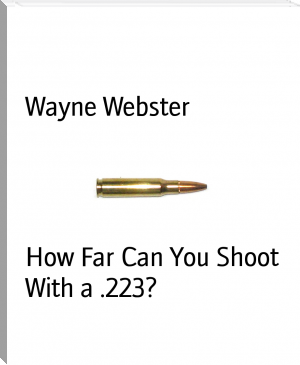MRAD and MOA by Wayne Webster (best non fiction books of all time txt) 📕

- Author: Wayne Webster
Book online «MRAD and MOA by Wayne Webster (best non fiction books of all time txt) 📕». Author Wayne Webster
So you want to buy a new scope for your gun, and when you start looking around you see that there are some scopes that are adjusted by MOA, and some by MRAD.
Confused, don’t worry you are not the only one!
Why have two?
So here is a simple explanation between the two, and the answer!
First what is MOA?
I have written about MOA so I don’t want to go into detail here, so lets touch on the basics. MOA stands for “minute of angle” and a loose definition is 1 MOA = 1 inch at one hundred yards. So if you get a 5 round grouping within 1 inch at 100 yards you have shot a 1 MOA . Subsequently if you shoot a 2 inch grouping at 200 yards you have shot a 1 MOA, and so on.
What is a Sub MOA?
Very simple, if you shoot a grouping less than 1 inch at 100 yards you have shot a Sub MOA, less than 2 inches at 200 yards, and so on.
So what is a MRAD?
The MRAD, also referred to as the “mil’ or even the “Mil-Dot’ does not stand for Military, it stand for “milliradian”. The reason why people associate it with the Military is because most scopes used by the Military are adjusted by MRAD.
Another misconception is that MRAD is a metric system, this is also false. Again this misconception comes from the Military, you will hear marksmen and snipers talking about distance in meters, the only reason for this is that most Military have adopted the NATO system, which uses the metric system, to standardise.
Both the MRAD and MOA are angular units of measure. Without getting to technical one milliradian is slightly over 3.6 inches at 100 yards, so if we talk about extreme long range shooting 2 milliradians is about 6 feet at 1000 yards, starting to see why Military Snipers use scopes graduated in MRAD?
So what long range shooters do is pretty simple, all they need to remember is that the distance between the dot centers on the cross hairs is 36 inches at 1000 yards. By knowing this the range to a target can be determined, if you know its size. Snipers use an average of 6 feet for a human target, and can pretty well guess the size of a target, knowing what they are looking at. All they need to do is adjust the elevation of the scope by counting the dots to get the cross hairs on target.
For a 6 foot tall target this would be 2 MRAD, if the scope adjusts in 1 click per MRAD then all that they would have to adjust is 2 clicks!
Now try and do that with MOA! I don’t want to even think about how many clicks would have to be made to adjust!
So that’s the answer to the question, for longer range shooting MRAD offers less scope adjustments!
Which is better?
That is a matter of personal preference, both systems work, it really depends what system you are comfortable with!
ImprintPublication Date: 04-26-2016
All Rights Reserved





Comments (0)